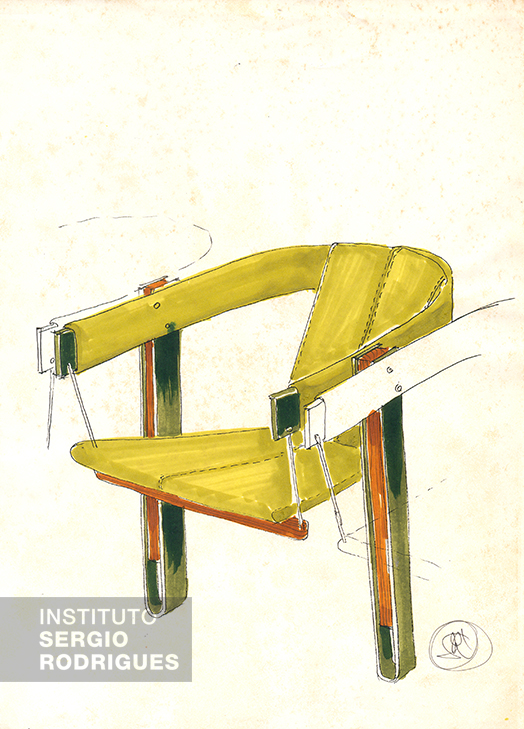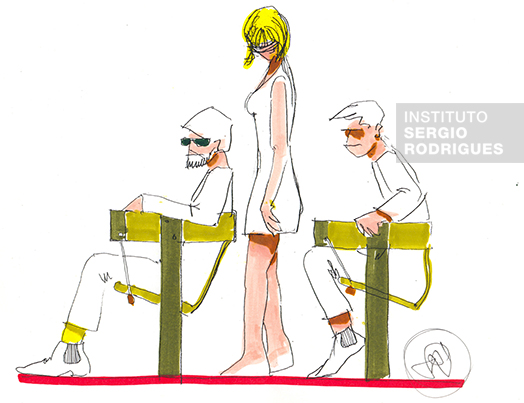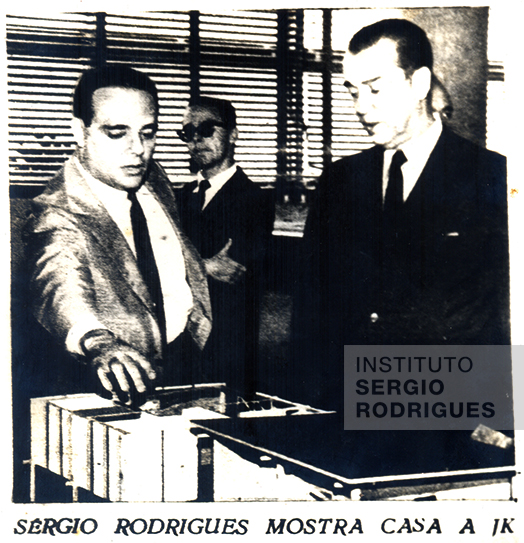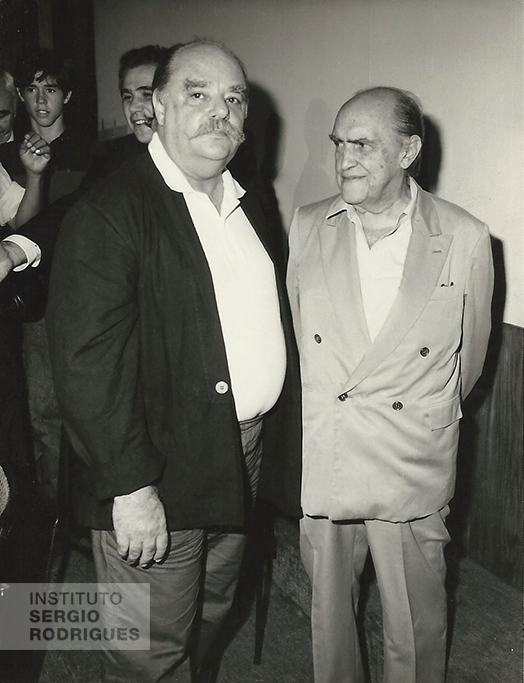Furniture with the looks of Brazil
Furniture with the looks of Brazil
Already with his name spreading abroad, Sergio was called in for important projects in Brazil, especially in the new capital. During this period, also at Oca, Sergio started getting orders to design furniture for Brasilia, the newly inaugurated capital of Brazil.
“I realized that Brasilia was coming up with those palaces, with that special architecture, and did not have an interior consistent with the architecture that was being presented. You noted that furniture was missing, that it did not complement things. So, certain settings in Brasilia were initially formed by pieces that complemented foreign architects’ work. There were wonderful pieces. But I believed that since a monumental architecture with the looks of Brazil, with something of Brazil, had already been created, the complements for these environments should be Brazilian too. There should be a touch of Brazil. There should be something that reflected our culture, our usual materials. Something of the Brazilian culture could be the Indian part. The historical part applied to the concept of furniture. So I said: ‘I will fight for this idea.’ And done with advantages, using Brazilian materials.
During a visit to the city, in 1963, the anthropologist Darcy Ribeiro, then president of the University of Brasilia, took him to meet the Dois Candangos auditorium, which was under construction at UNB. Darcy wanted Sergio to design the auditorium chairs. Sergio was very enthusiastic about it and, at the same time, in a panic, because it he only had twenty days to deliver an order for 250 chairs, which he called the Candango armchairs. On the flight back, he imagined a metal base to hold the single piece of leather to be used for the seat and back of the chair. According to journalist Adélia Borges, this way the chair “should swing slightly to allow people to circulate better between the rows – a detail he decided to use when he sat, at the door of a motorcycle shop, and looked at a wheel missing its spokes.”
The mission was difficult and heavy, but Sergio managed to deliver the chairs in two weeks. The imbroglio to assemble them at the auditorium was a second stage of this complicated task. When the first chair was installed and Sergio sat in it, the leather sank. There was a big rush to solve the issue and they ended up calling in a college student’s father who manufactured gloves, and who attached the leather firmly to the structure using a wooden instrument. And so the auditorium was opened hastily, with all chairs in place, except one, for lack of time. Sergio then spent the entire opening ceremony standing in the place where the chair was supposed to be so nobody would notice its absence. The chairs used at UNB were then used in many other theaters throughout Brazil, including the Anhembi theater, in São Paulo.
After the UNB chairs, Sergio was called in to Brasilia several times for other orders. He made furniture for the Foreign Ministry and furnished the office of the chancellor. He also made furniture for the Senate, for the Alvorada Palace. Beatriz Vera recalls that when they got married, Sergio was furnishing all the houses of the Central Bank directors, in Brasilia. He did the interior of the National Theater of Brasilia, of Cine Brasilia, and many other projects.
“Some furniture in Brasilia was made in a very large series. It was not comparable to Forma or Objeto yet, these other already traditional factories. We were getting started there, but bravely, doing a lot of things. And the Foreign Ministry, always very enthusiastic with us, always wanted something more. For example, the case of the furniture that went to the Embassy Palace in Rome that the Foreign Ministry called us to do. There was much to be done, minister tables, that kind of thing. They said this: ‘We are building all these Ministries, but there is no table for the ministers.’ I said: ‘There are the tables that we have here at Oca.’ First, there was enough of them, better than what there was in the market, and all were of style. It was something closer to traditional furniture, but they saw that we were offering a Brazilian style of furniture.”
A few years later, in the early 1970s, already under the military regime, Vera and Sergio started going to Brasilia together. “We would cry. We would visit the homes of Central Bank directors, for example, and the furniture was all American. The houses all looked like those in House and Garden magazine, floral sofas in profusion. The furniture Sergio had made was all stacked away in garages. These were the wives of the military men, it was the military regime. That is why the foreigners bought everything at a bargain price. Everything made out of Jacaranda. We were so disappointed.”
Veronica, Sergio’s architect daughter, now deceased, once remarked that an ambassador she had known had said that when he arrived in Brasilia there was already some of Sergio’s furniture there. “She said that every person who came arrived there replaced, got rid of or even carried a piece away. In the military regime days it had to be a beauty. Everything had to be changed, thrown out, I don’t know. Sergio said Jacaranda was beautiful. The table of the Itamaraty Palace chancellor is there in Brasilia, yet today, and is beautiful. Behind the chancellor’s desk there is a bookcase that was also made by him. It is a beautiful cabinet. All of it is Sergio’s. These they kept in a very good state.”

Sketch of the Candango armchair Sergio Rodrigues created, in 1962, for the Dois Candangos auditorium at the University of Brasilia (UNB).

Sketch of the Candango armchair Sergio Rodrigues created, in 1962, for the Dois Candangos auditorium at the University of Brasilia (UNB).

Opening event for the Dois Candangos Theater, at the University of Brasilia, on April 21, 1962.

Sergio Rodrigues showing a mockup to Juscelino Kubitschek, the then president of Brazil, at the "Prefabricated individual house" exhibition, at the Museum of Modern Art, in Rio de Janeiro, in March 1960.

Sergio Rodrigues and Oscar Niemeyer, in the 1980s.
